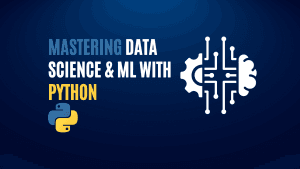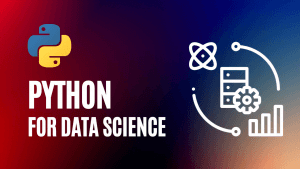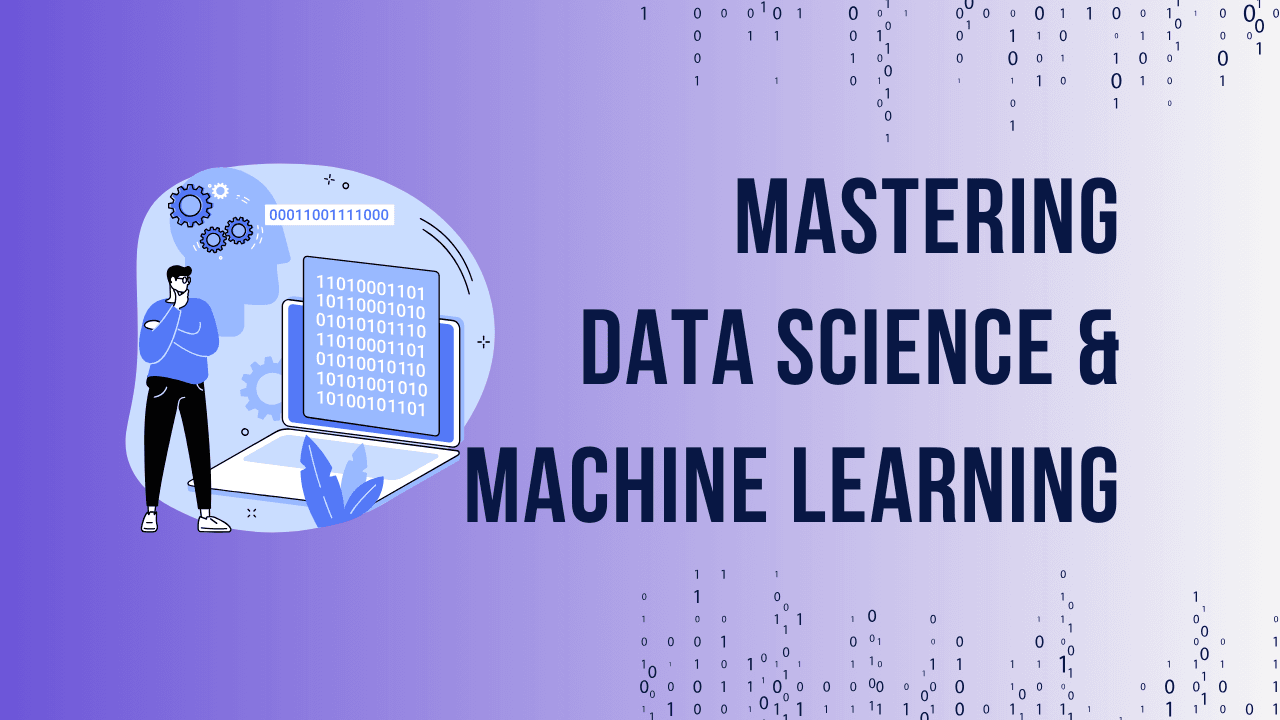Machine Learning (ML) has revolutionized how we approach problem-solving across various industries. With the ability to learn from data, identify patterns, and make decisions with minimal human intervention, ML has become a cornerstone of modern technology. Python, known for its simplicity and versatility, has emerged as the go-to language for implementing ML algorithms and models. This article explores the real-world applications of ML using Python, highlighting the challenges, key techniques, and tools essential for success in this field.
Importance of Machine Learning in Modern Industries
Ready to take you Data Science and Machine Learning skills to the next level? Check out our comprehensive Mastering Data Science and ML with Python course.
Machine Learning in Healthcare
Machine Learning is transforming healthcare by enabling predictive analytics, personalized treatment plans, and early diagnosis. Python-based ML models analyze vast datasets, such as electronic health records and genetic information, to identify trends and predict patient outcomes.
Machine Learning in Finance
In the financial sector, ML models are used for algorithmic trading, risk management, and fraud detection. Python’s powerful libraries make it easier to develop models that analyze financial data, detect anomalies, and predict market trends.
Machine Learning in Retail
Retailers leverage ML to enhance customer experiences through personalization, inventory management, and demand forecasting. Python is employed to create recommendation systems and analyze consumer behavior data.
Ready to take you Data Science and Machine Learning skills to the next level? Check out our comprehensive Mastering Data Science and ML with Python course.
Importance of Machine Learning in Modern Industries
Data Quality Issues
One of the primary challenges in ML is ensuring data quality. Incomplete, noisy, or biased data can lead to inaccurate models. Python’s data processing libraries, like Pandas, are instrumental in cleaning and preprocessing data.
Algorithm Complexity
Choosing the right algorithm is crucial. Complex algorithms may provide more accurate results but require significant computational resources. Python supports various ML algorithms, allowing developers to experiment and optimize their models.
Data Bias and Fairness
Bias in data can result in unfair or discriminatory outcomes. Python’s libraries offer tools to detect and mitigate bias, promoting fairness in ML models.
Model Interpretability
Understanding how an ML model makes decisions is essential, especially in sensitive fields like healthcare. Python provides frameworks like SHAP and LIME to interpret model predictions.
Scalability of Models
As datasets grow, scaling ML models becomes a challenge. Python’s integration with distributed computing platforms helps scale models efficiently.
Ready to take your data analysis skills to the next level? Check out our comprehensive Python for Data Science Course!
Key Machine Learning Techniques and Algorithms
Supervised Learning
Supervised learning involves training a model on labeled data. Python’s Scikit-learn library is widely used for implementing classification and regression algorithms.
Unsupervised Learning
Unsupervised learning models identify patterns in data without predefined labels. Techniques like clustering and dimensionality reduction are supported by Python’s ML libraries.
Reinforcement Learning
Reinforcement learning is a type of ML where an agent learns to make decisions by interacting with its environment. Python libraries like TensorFlow support the development of these models.
Deep Learning
Deep Learning, a subset of ML, focuses on neural networks with many layers. Python’s TensorFlow and Keras libraries are popular choices for building deep learning models.
Ensemble Methods
Ensemble methods combine multiple ML models to improve performance. Python’s Scikit-learn library offers tools for implementing various ensemble techniques like Random Forest and Gradient Boosting.
Case Studies: Real-World Applications
Predictive Analytics in Healthcare
ML models have been used to predict patient outcomes, such as the likelihood of readmission or response to treatment. Python has been integral in building these predictive models.
Fraud Detection in Finance
Financial institutions use Python-based ML models to detect fraudulent activities by analyzing transaction patterns and flagging anomalies.
Customer Personalization in Retail
Retailers use Python to develop recommendation systems that personalize the shopping experience based on customer preferences and behavior.
FAQs:
What are the real-world applications of Machine Learning using Python?
Machine Learning using Python is applied in various fields like healthcare for predictive analytics, finance for fraud detection, and retail for customer personalization.Why is Python preferred for Machine Learning?
Python is preferred due to its simplicity, extensive libraries, and community support, making it easier to implement and experiment with ML models.What are the challenges in implementing Machine Learning models?
Common challenges include data quality, algorithm complexity, data bias, model interpretability, and scalability. Python’s tools help mitigate these challenges.Which Python libraries are essential for Machine Learning?
Essential Python libraries for ML include Scikit-learn, TensorFlow, Keras, PyTorch, Pandas, and NumPy.
Ready to take you Data Science and Machine Learning skills to the next level? Check out our comprehensive Mastering Data Science and ML with Python course.




